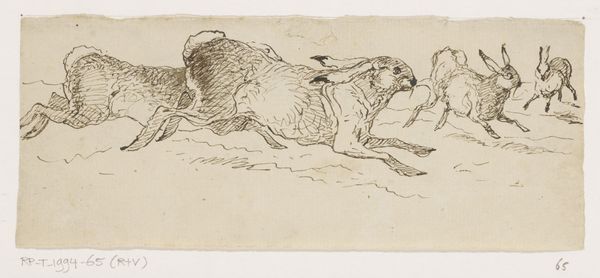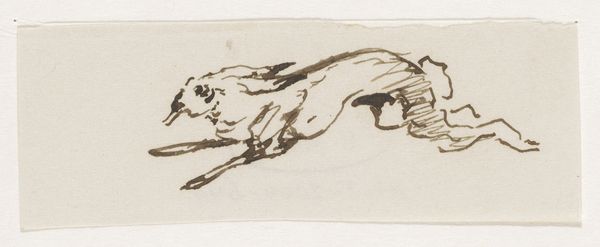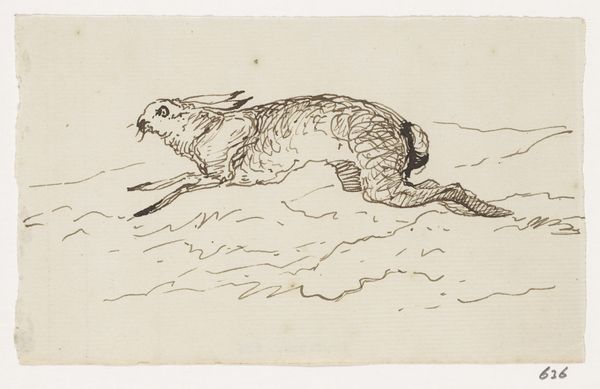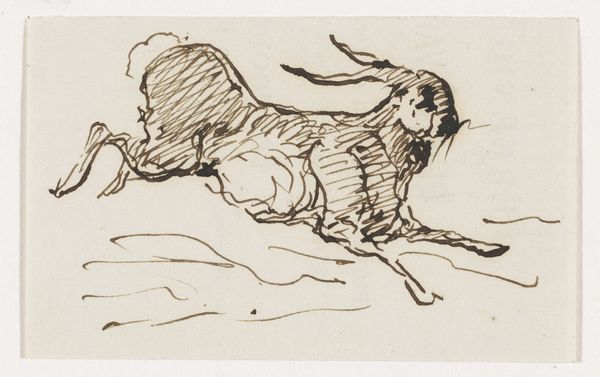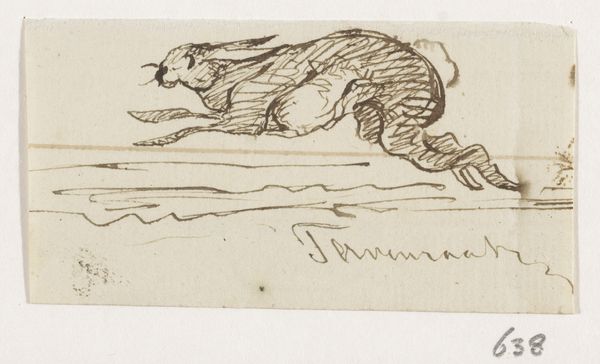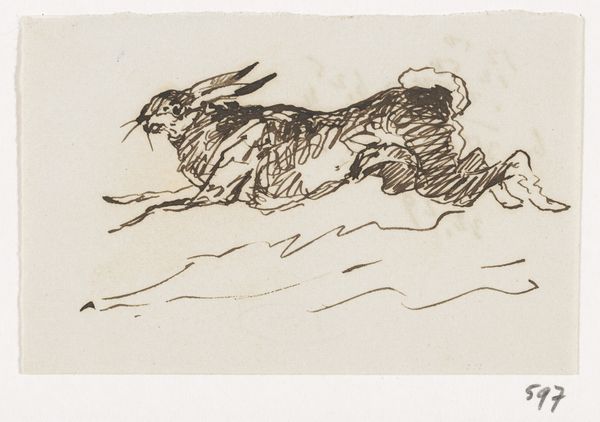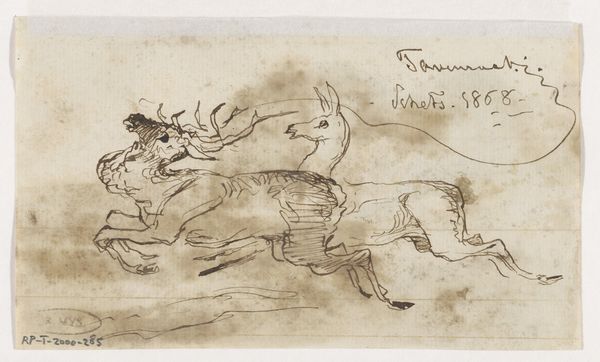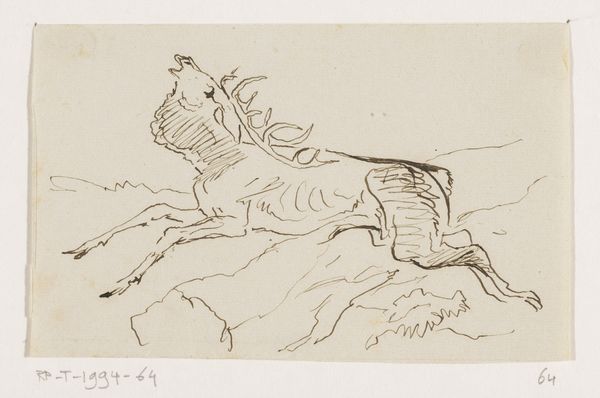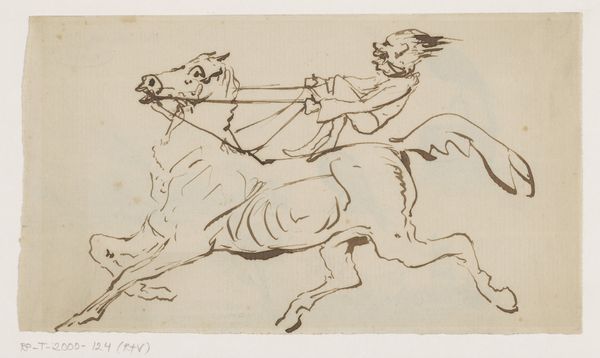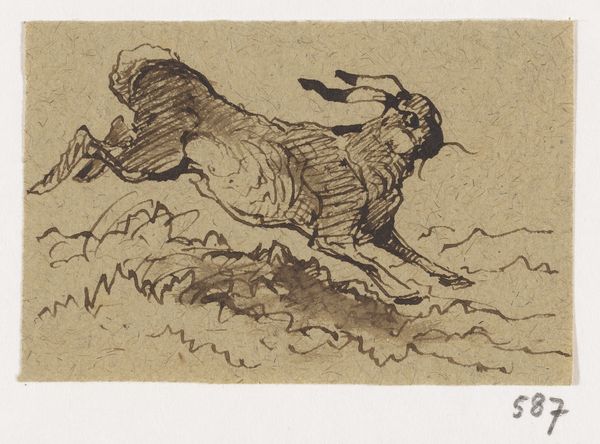
Dimensions: height 58 mm, width 99 mm
Copyright: Rijks Museum: Open Domain
Curator: Looking at this lively drawing titled "Haas," crafted between 1840 and 1880, by Johannes Tavenraat, one gets a real sense of capturing movement, doesn't one? The medium used here is pen and ink. What's your immediate impression? Editor: I agree, there's a palpable sense of immediacy, but also…a kind of vulnerability? The hare seems almost frantic, exposed in its flight. And that small figure underneath, what do you think its significance is? Curator: The figure below, seems like a lone individual possibly trying to shoo the animal or chasing it with a stick and hat; this contrast may serve a social commentary on our interactions with the natural world. I wonder if the artist intended to subtly comment on human dominion over nature. Editor: That reads true to me. There is also that Romanticism showing through, not only through the landscape style and subject but how it subtly frames this narrative of the vulnerable in-flight hare. Do you think the limited materials – the pen and ink – contribute to this feeling? Curator: Absolutely. The sparseness evokes immediacy, but I see layers in that seemingly fast sketch, revealing an underlying understanding about hares in art: historically, it is a symbol laden with meaning. Associated with spring, the lunar cycle, femininity, even sacrifice. But these hares look especially pressured. Editor: Precisely! Considering Romanticism arose during a period of intense social upheaval – urbanization, industrialization – it’s reasonable to view this hare's flight as metaphor for the anxieties of a society confronting its own transformation, its rapid change in relation with nature, perhaps. The politics of progress. Curator: That offers compelling context. Placing the piece within the socio-political context really enhances its visual reading, even bringing depth into Tavenraat’s symbolic lexicon. Editor: Well, seeing that connection between the figure, hare, nature, and socio-politics, just deepened my appreciation of how art is entangled with, and reflects our human experiences. Curator: Indeed, examining the visual echoes through our own contemporary anxieties shows us the ongoing role images still have today!
Comments
No comments
Be the first to comment and join the conversation on the ultimate creative platform.
